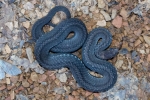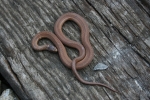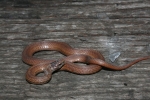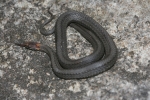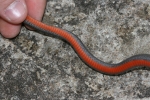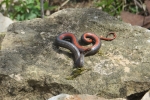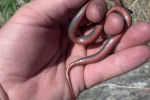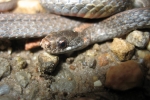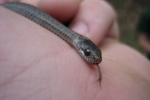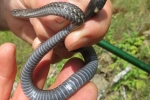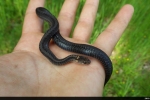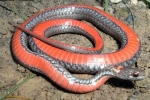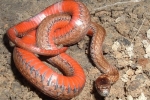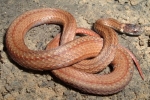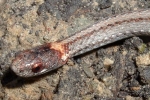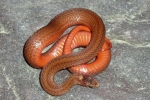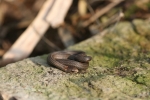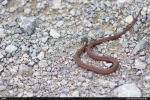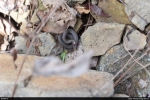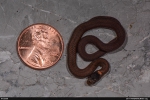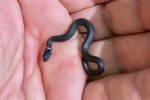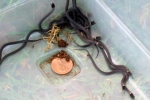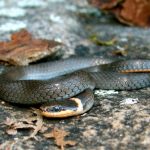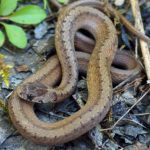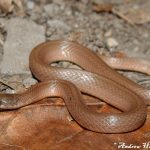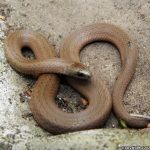Red-bellied Snake
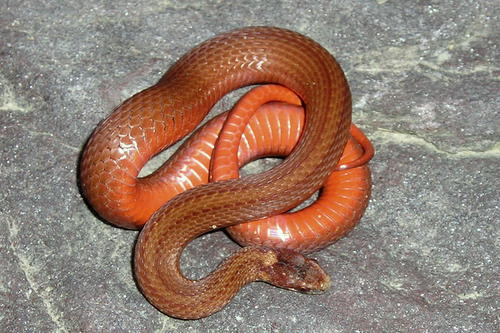
Scientific Name: Storeria occipitomaculata
Size: 8 - 16 inches (20.3 - 40.6 cm)
Status: Abundant
Habitat:
Deciduous hardwood forest & upland regions, open canopy woodlands, wood/field borders, wood/stream borders, moist woodlands, open fields, marsh or bog borders. May be found under rocks, logs, bark, or other natural debris.
Description:
Closely related to the Northern Brown Snake, The Redbellied snake is a small fossorial serpent with a highly variable dorsal ground color. The dorsum can be gray, tan, yellow, or brown and may have a single broad stripe down the center or up to 4 or 5 faint stripes. The belly is usually brilliant red, but also may be yellow, orange, or in some populations, black. 3 faint spots can be found on the neck, sometimes fusing to form a collar. The scales are keeled and the anal plate is divided. Found in mountainous or hilly portions of Pennsylvania where it spends most of its time beneath cover objects of all types. Sometimes curls it's upper lip when handled.
- The coloration and patterns are highly variable.
- The dorsal background can range from light to dark brown, reddish brown, grey, or olive black.
- The dorsal has a mid vertebral stripe that may or may not be present. When it is present it is lighter than the background color and set off by alternating lines of white and dark spots.
- The dorsal coloration extends in to the ventrals.
- There are two rows of dark spots bordering the ventrals
- The ventral is red, orange, yellow, tan to pink.
- The nape may have three small white spots.
- The skin between the scales is black.
- The head has one medial and two lateral cream to yellow colored spots.
- The head may be the same or slightly darker than the dorsal background.
- The throat and chin are white.
- Small, stout species.
- Dorsal scales are keeled.
- Similar to adults.
- 15 scale rows at midbody, anterior and posterior
- 107-136 ventral scales
- 34-63 subcaudals scales | 2 rows of subcaudals
- 2 nasal scales
- 0 loreal scales
- 2 preocular scales
- 2 postoculars scales
- 1 + 2 temporal scales
- 6 supralabials
- 7 infralabials
- Anal plate is divided


References:
- Hulse, C. and McCoy C. J. and Ellen Censky ,1998. Amphibians and Reptiles of Pennsylvania and the Northeast. 324-327pp.
- Ernst, Carl H. and Ernst, Evelyn M. ,2003. Snakes of the United States and Canada. 332-337pp.
- Bob Hamilton
- Dave Emma
- Kyle Loucks
- Bob Bull
- Rex Everett
- Kyle Fawcett
- Jordan Allen
- Brandon Hunsberger
- Chris Bortz
- Phillip Hong-Barco
- Phil Dunning
Heads up!
Please contribute your observation of this and other herps to the Pennsylvania Amphibian and Reptile Survey. Your help is needed.
